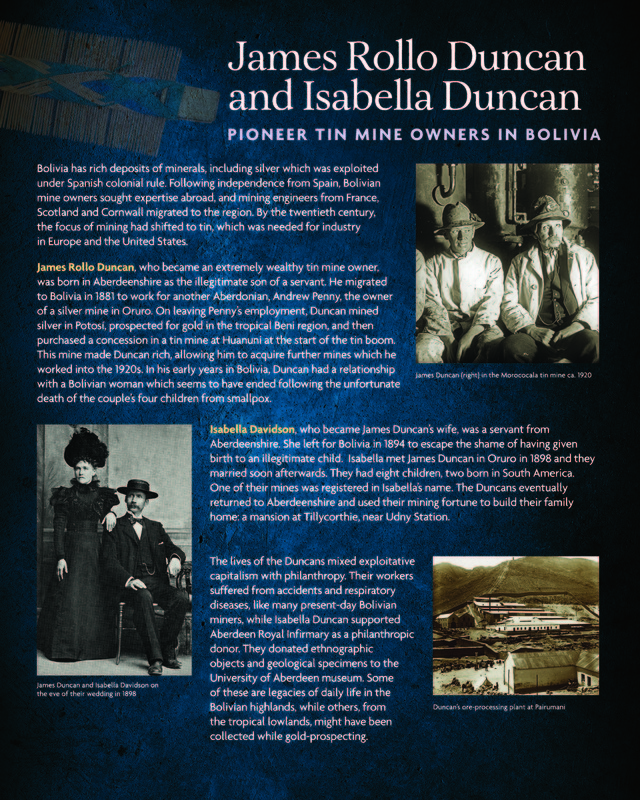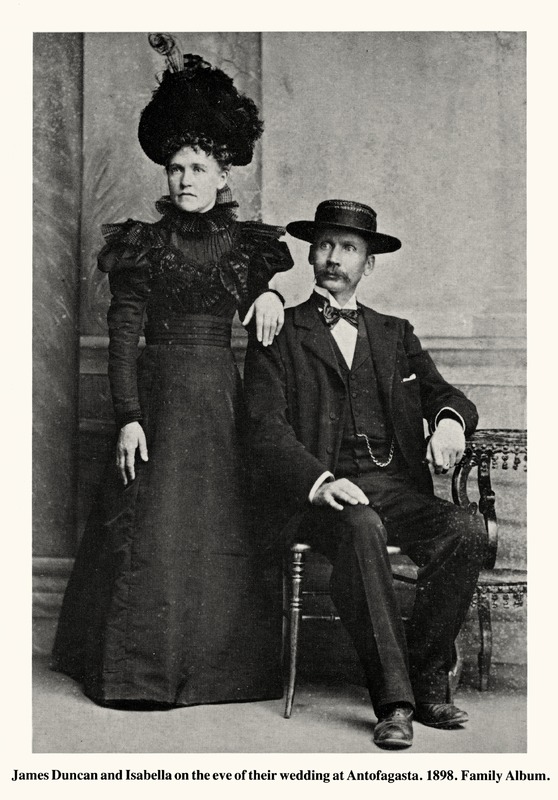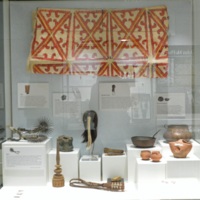James Rollo Duncan and Isabella Duncan
PIONEER MINE OWNERS IN BOLIVIA
Bolivia has rich deposits of minerals, including silver which was exploited under Spanish colonial rule. Following independence from Spain, Bolivian mine owners sought expertise abroad, and mining engineers from France, Scotland and Cornwall migrated to the region. By the twentieth century, the focus of mining had shifted to tin, which was needed for industry in Europe and the United States.
James Rollo Duncan, who became an extremely wealthy tin mine owner, was born in Aberdeenshire as the illegitimate son of a servant. He migrated to Bolivia in 1881 to work for another Aberdonian, Andrew Penny, the owner of a silver mine in Oruro. On leaving Penny's employment, Duncan mined silver in Potosi, prospected for gold in the tropical Beni region, and then purchase a concession in a tine mine at Hanuni at the start of the tin boom. This mine made Duncan rich, allowing him to acquire further mines which he worked into the 1920s. In his early years in Bolivia, Duncan had a relationship with a Bolivian woman which seems to have ended following the unfortunate death of the couple's four children from smallpox.
Isabella Davidson, who became James Duncan's wife, was a servant from Aberdeenshire. She left for Bolivia in 1894 to escape the shame of having given birth to an illegitimate child. Isabella met James Duncan in Oruro in 1898 and they married soon afterwards. They had eight children, two born in South America. One of their mines was registered in Isabella's name. The Duncans eventually returned to Aberdeenshire and used their mining fortune to build their family home: a mansion at Tillycorthie, near Udny Station.
The lives of the Duncans mixed exploitative capitalism with philaanthropy. Their workers suffered from accidents and respiratory diseases, like many present-day Bolivian miners, while Isabella duncan supported Aberdeen Royal Infirmary as a philanthropic donor. They donated ethnographic objects and geological specimens to the University of Aberdeen museum. Some of these are legacies of daily life in the Bolivian highlands, while others, from the tropical lowlands, might have been collected while gold-prospecting.
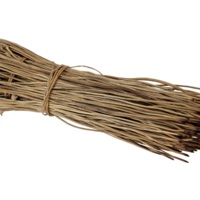
Brush
Many cacti species grow in the Bolivian highlands, where they are used for their wood and spines. This brush is made from bound cactus spines. The finely made comb has a double row of cactus spines inserted into a central binding with decoration in blue and now faded red wool.

Comb
Many cacti species grow in the Bolivian highlands, where they are used for their wood and spines. This brush is made from bound cactus spines. The finely made comb has a double row of cactus spines inserted into a central binding with decoration in blue and now faded red wool.

Sling
This sling for hurling stones is made of hand-spun llama fibre yarn. Light brown and white are the natural colours of the animals. Rural Andean people used slings for many purposes: as weapons, in rituals, and when hunting and herding animals. They would have been in daily use among the llama herders who transported minerals for Duncan.
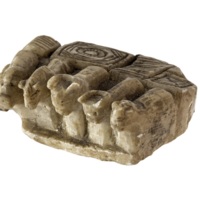
Amulet (illa)
This small carving shows five different domestic animals and a building. In rural areas, Andean people keep stones or carvings in the shape of their animals for use in rituals. These objects are called illas. Caring for an illa helps ensure the abundance of the herd and prosperity to the herders. When not in use, they are carefully guarded and kept out of sight.
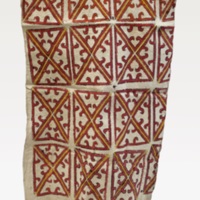
Tunic
Bolivia has lush, tropical lowlands, as well as the cold, barren highland region where Duncan mined tin. Duncan, and other Europeans, prospected for gold in the lowland Beni region in the late-nineteenth century, in indigenous Yuracaré territory. The bark cloth tunic matches illustrations of those worn by Yuracaré men at the turn of the twentieth century. The design shows European influence, derived from the Roman Catholic missions of the colonial era.
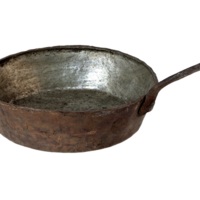
Frying Pan
This pot and frying pan, of a design used in highland Andean communities, may have been used for cooking at one of Duncan's mining camps. Duncan notes that the pot and frying pan are made of copper with a tin lining and the frying pan has an iron handle. Even everyday objects in Duncan's collection have their metal composition noted, reflecting his interest in mining.
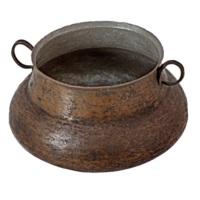
Pot
This pot and frying pan, of a design used in highland Andean communities, may have been used for cooking at one of Duncan's mining camps. Duncan notes that the pot and frying pan are made of copper with a tin lining and the frying pan has an iron handle. Even everyday objects in Duncan's collection have their metal composition noted, reflecting his interest in mining.

Chocolate whisk
Chocolate was a staple drink and food in pre-contact Central and South America. Spanish colonists in the 1600s developed the chocolate whisk, or molinillo, to aid in frothing and mixing chocolate drinks to their tastes. This large molinillo, which Duncan notes is made of orange wood, was probably intended for use in a chocolate pot.

Spurs
These iron spurs inlaid with silver date from the 1600s and would have been worn by high-class Spaniards of the colonial era. During the period of Spanish rule, silver deposits at Potosí (in what is now Bolivia) supplied vast wealth to colonists and the Spanish Crown, with indigenous people working the mines under a compulsory labour draft. In post- independence Bolivia, Duncan mined silver at Potosí for a time, and he may have collected these historic spurs because of his interest in mining history.

Hammer
Duncan describes this object as a 'hammer - found in bottom of old tin mine'. It is probably a 'stamp shoe', used in Spanish colonial silver refineries to crush silver ore to a powder before it was mixed with mercury to extract the silver. It would have been used in an assemblage of water-powered hammers. Unskilled indigenous labourers fed the hammers, risking respiratory diseases from the dust generated. Others trod the toxic silver-mercury amalgam with their feet.
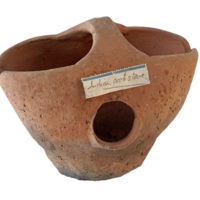
Model Clay Stove
Miniature objects play an important role in Andean culture. Famously, people buy them at the Alasitas fair in La Paz, which Duncan attended, to include in offerings intended to generate an abundance of full-size material goods and riches. The designs of these miniature clay pots and stove are identical to larger ones used for cooking in the Andes. It is unclear whether they are intended as toys (perhaps for Duncan’s children), ritual objects, or both.
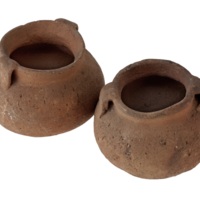
Miniature Pots
Miniature objects play an important role in Andean culture. Famously, people buy them at the Alasitas fair in La Paz, which Duncan attended, to include in offerings intended to generate an abundance of full-size material goods and riches. The designs of these miniature clay pots and stove are identical to larger ones used for cooking in the Andes. It is unclear whether they are intended as toys (perhaps for Duncan’s children), ritual objects, or both.
Shrunken Head
Duncan donated a shrunken head (tsanta) to the University Museum in 1918-19. It is not from Bolivia, but from the Shuar people of northern Peru and eastern Ecuador. We do not know how he acquired it, but there are records of tsantsas on sale in Panama in the late 1910s, when the Duncans travelled through the Panama canal on a voyage to Scotland. Shuar men used the shrunken heads of enemies in rituals concerning the circulation of power, and heads could be traded once the rituals were over. By the late nineteenth century, production of tsantsas – genuine and fake – was driven by Euro-American demand for souvenirs of Amazonian 'savagery'.


